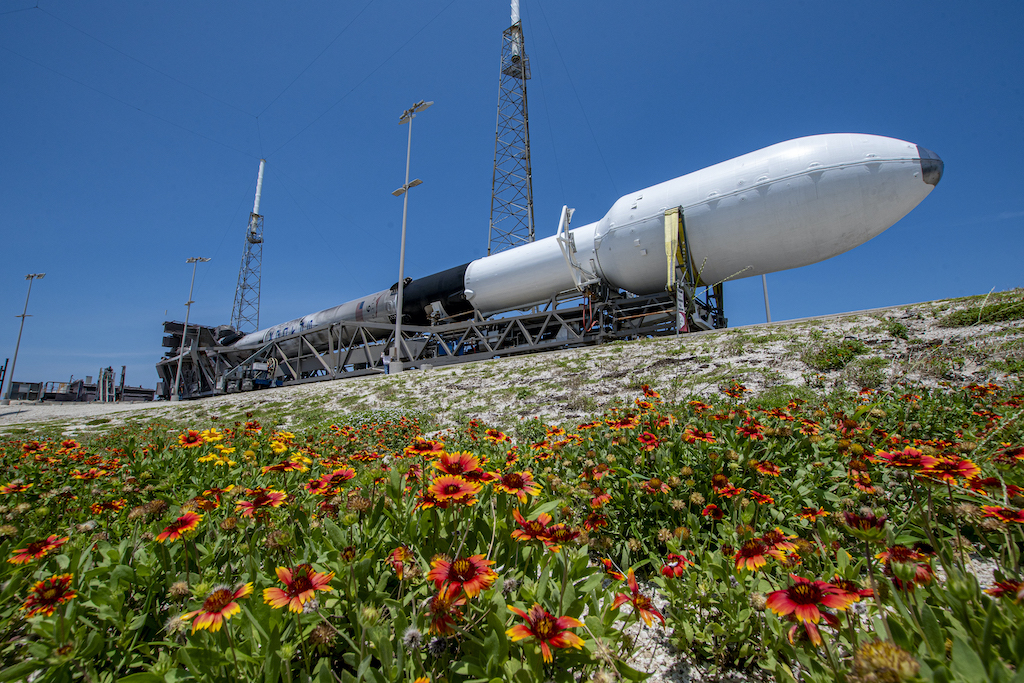
Today, July 1, it will be launched: the Euclid space telescope. This device will take images of distant galaxies for years to come. Main objective: to map where the mysterious dark matter is. Five questions about Euclid.
Anyone interested in astronomy should check it out around five o’clock this afternoon. Through a live stream from ESA Can follow the launch of the Euclid Space Telescope on a SpaceX Falcon 9 rocket from Cape Canaveral in Florida. At the moment, the launch is scheduled for 5:12 p.m. Dutch time. Unless the weather conditions are bad, then he will go into space.
What is Euclid for one thing?
It is a large telescope (4.5 meters long, 3.1 meters in diameter, weighing 2100 kilograms) that will be taken into space and from there will image much deeper space in the years to come. . The project is led by the European Space Agency (ESA), with contributions from NASA.
What will Euclid do?
It will very systematically take more than one hundred thousand photos, in visible and infrared light, which are superimposed. Euclid visualizes galaxies up to 10 billion light-years away. The telescope will thus scan about a third of the sky. This creates a sort of map of the galaxies in the universe.
But while Euclid is doing this, he serves another purpose: to find dark matter. It is the elusive “material” (in quotes, because it is not tangible, visible material) that must be spread across the universe between all these galaxies; its mass is needed to explain why stars in a galaxy stick together.
Dark matter cannot be seen and does not interact with radiation. It can therefore only be shown indirectly. Scientists will try to do this with Euclid. Light from billions of light years falls on Euclid, bending slightly along the way under the influence of large masses, such as dark matter; which act as a kind of lens. Due to this deviation, the galaxies should appear somewhat compressed. Because the shape of many galaxies is known, the difference between the measured shape and the theoretical shape can be used to calculate the gravitational field deflecting light, and therefore the amount of dark matter.

What does Euclid look like?
Because the telescope must be extremely stable, an extremely rigid frame is required. It’s made of ceramic silicon carbide, a somewhat exotic material — very brittle and stiff — that’s often used for such demanding applications. There are two instruments on board: one for visible light, the Visible Imager (VIS), and next to it a “Near Infrared Spectrometer and Photometer (NISP)”, which takes images in the near infrared. Also on board are a solar panel that can generate 2 kilowatts of electricity and a large antenna that transmits data to Earth. Euclid was designed and built this way that it should definitely last six years.
What is the contribution of the Netherlands to the system?
Airbus, based in Leiden, designed and built Euclid’s attitude control system. A crucial part, as it ensures that Euclid remains very stable in a certain direction. Extremely important for making sharp images of distant galaxies. “Compare that with keeping a ray of light stationary on a 2 euro coin 100 kilometers away,” says Lex Meijer, systems engineer at Airbus.
In addition, Dutch scientists will collect the data that Euclid sends to Earth. They have developed a new system for thiswriting by Volkskrant.
gravitational waves
The Netherlands contributes to the world of international astronomy. The news came out this week the detection of gravitational waves in spaceincluding with the help of the large Westerbork radio telescope.
When are the first results?
After launch, Euclid flies to a special place, namely an orbit around the so-called Langrange point 2, where the gravity of the earth and the sun are in balance. This is a suitable place to park a space telescope; the James Webb Space Telescope also orbits this point. Four weeks after launch, Euclid should arrive here.
After some tests and adjustments, taking pictures of the deep universe can begin. It will be five years before all the pictures are taken. After that, patience will be tested again, as the data analysis will also take several years.
Opening illustration: Euclid on a background of galaxies. Illustration: ESA/Euclid/Euclid Consortium/NASA. Background galaxies: NASA, ESA and S. Beckwith (STScI) and the HUDF team, CC BY-SA 3.0 IGO
If you found this article interesting, subscribe to our free weekly newsletter.

“Food expert. Unapologetic bacon maven. Beer enthusiast. Pop cultureaholic. General travel scholar. Total internet buff.”
 DodoFinance Breaking News Made For You!
DodoFinance Breaking News Made For You!
